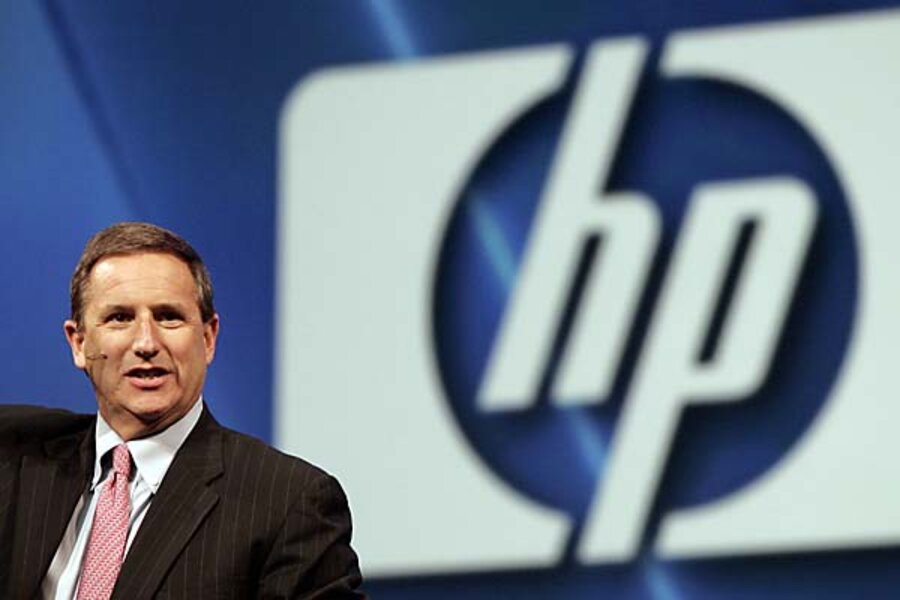Are top CEOs worth their eye-popping pay? New report says no.
Loading...
A decade-long analysis of executive compensation has found that the highest paid chief executive officers do the worst job in driving the stock performance of their companies.
In a report released Monday, Boston market-research firm MSCI, which studied 429 large US companies over a 10-year period that ended in 2015, found that average returns for shareholders were 39 percent higher when a company's CEO was in the bottom 20 percent of executive earners than in the top 20 percent, as CNN reported.
“Even after adjusting for company size and sector, companies with lower total summary CEO pay levels more consistently displayed higher long-term investment returns,” write report authors.
At a time of heated national debate about growing wealth inequality and excessive executive compensation, the report's authors call for executive pay to be better-aligned with performance. They also call into question the view among corporations that generous pay packages, particularly the huge stock incentives, help recruit celebrity-level talent and drive company performance.
“The highest paid had the worst performance by a significant margin,” Ric Marshall, a senior corporate governance researcher at MSCI, told The Wall Street Journal. “It just argues for the equity portion of CEO pay to be more conservative.”
American's highest-paid CEOs earn an average annual pay package of $20.7 million, including salary, cash bonuses, equity, and other benefits, according to executive data from research firm Equilar.
The practice of offering this colossal compensation started to take root a few decades ago, though companies began adding the equity incentive to CEO packages after the 2008 financial crisis, when stock prices were low, reports CNBC.
“We haven’t always given so much credit to business leaders,” as Nancy F. Koehn, a historian at the Harvard Business School (HBS), noted in The Washington Post in 2014.
“French economist Thomas Piketty argues in his new book, ‘Capital in the Twenty-First Century,’ that sometime after 1970, society became more tolerant of once unacceptably high levels of executive pay, because American culture — and senior executives and corporate boards in particular — embraced a notion of superstardom or super-leadership or super-merit for a small number of powerful leaders, including athletes, celebrities and chief executives,” she writes.
Among the business celebrities whose names became synonymous with those of their companies, and who have been heralded as gurus and heroes, are former General Electric CEO Jack Welch and Apple’s former chief executive Steve Jobs.
“Such lionization is misplaced,” concludes Prof. Koehn. “Operating a sustainable enterprise, as any executive, manager or employee knows well, is inherently a team sport.”
In 1990, the equity-based share of total compensation for senior managers of US corporations was only 20 percent, according to Mihir A. Desai, a professor of finance at Harvard Business School. Today, it’s upwards of 70 percent, reports MSCI.
“This transformation would be welcome if it served to structure incentives and rewards appropriately—indeed, nothing is more important for a market economy than the structure of incentives for managers and investors,” wrote Prof. Desai in the Harvard Business Review in 2012.
“Unfortunately, the idea of market-based compensation is both remarkably alluring and deeply flawed. The result has been the creation of perhaps the largest and most pernicious bubble of all: a giant financial-incentive bubble,” he suggests.
MSCI researchers recommend more transparency of pay in corporations’ annual financial disclosures. There has been some progress in this area: In 2015, the Securities and Exchange Commission (SEC) approved a rule requiring that companies make public the pay gap between top executives and rank-and-file employees. Before that, the 2010 Dodd-Frank financial reform law that came in the wake of the 2008 financial crisis required public companies to hold advisory shareholder votes on executive compensation every three years, though those aren't binding.
The authors write that the SEC should also require disclosure of cumulative incentive pay over long periods, to help connect a CEO’s pay with longer-term performance, instead of focusing on the short term.
“Closer scrutiny of the relationship between CEO pay and performance over longer time periods could lead to different conclusions,” suggest report authors.








